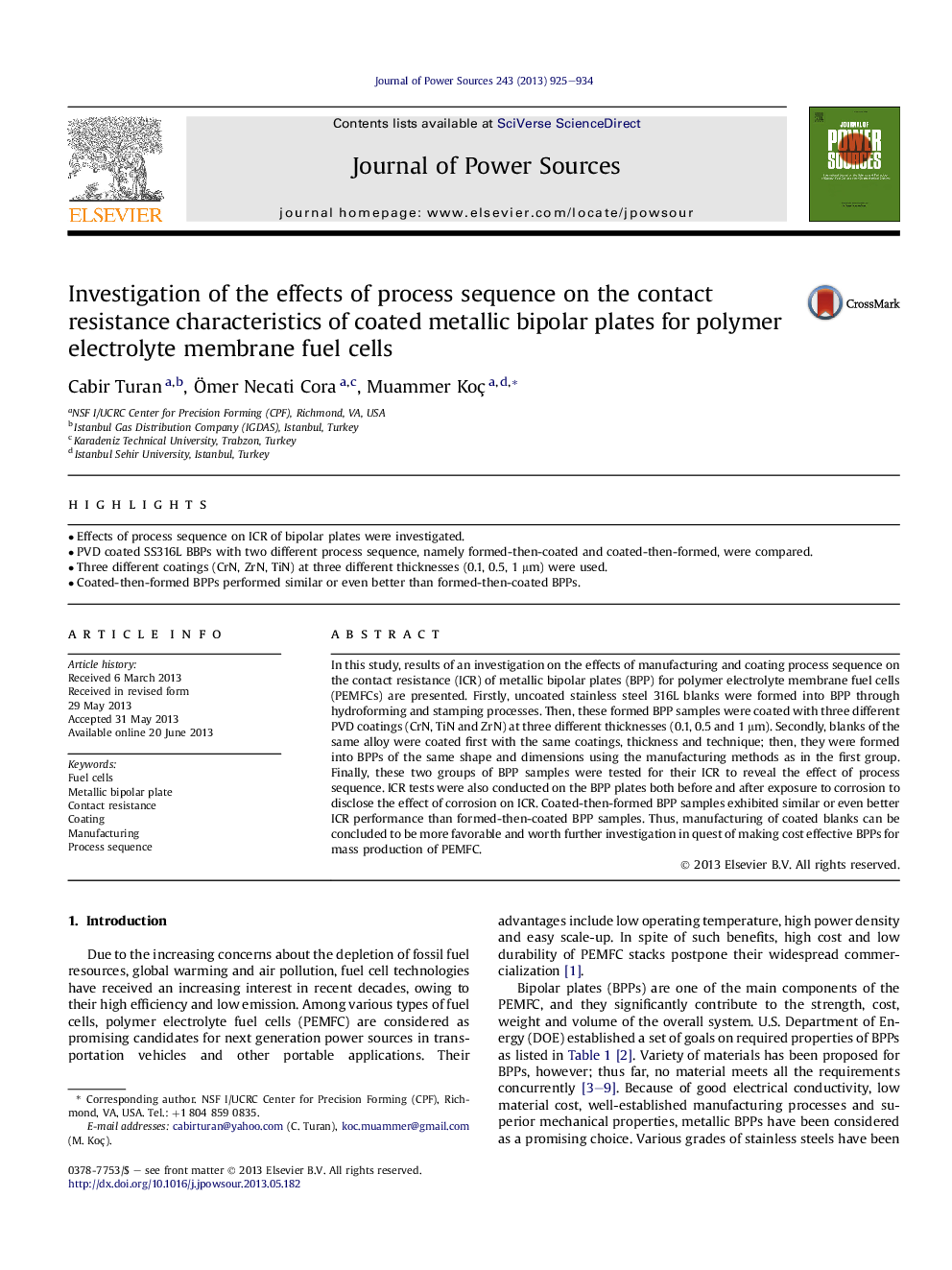| Article ID | Journal | Published Year | Pages | File Type |
|---|---|---|---|---|
| 7739963 | Journal of Power Sources | 2013 | 10 Pages |
Abstract
In this study, results of an investigation on the effects of manufacturing and coating process sequence on the contact resistance (ICR) of metallic bipolar plates (BPP) for polymer electrolyte membrane fuel cells (PEMFCs) are presented. Firstly, uncoated stainless steel 316L blanks were formed into BPP through hydroforming and stamping processes. Then, these formed BPP samples were coated with three different PVD coatings (CrN, TiN and ZrN) at three different thicknesses (0.1, 0.5 and 1 μm). Secondly, blanks of the same alloy were coated first with the same coatings, thickness and technique; then, they were formed into BPPs of the same shape and dimensions using the manufacturing methods as in the first group. Finally, these two groups of BPP samples were tested for their ICR to reveal the effect of process sequence. ICR tests were also conducted on the BPP plates both before and after exposure to corrosion to disclose the effect of corrosion on ICR. Coated-then-formed BPP samples exhibited similar or even better ICR performance than formed-then-coated BPP samples. Thus, manufacturing of coated blanks can be concluded to be more favorable and worth further investigation in quest of making cost effective BPPs for mass production of PEMFC.
Related Topics
Physical Sciences and Engineering
Chemistry
Electrochemistry
Authors
Cabir Turan, Ãmer Necati Cora, Muammer Koç,
